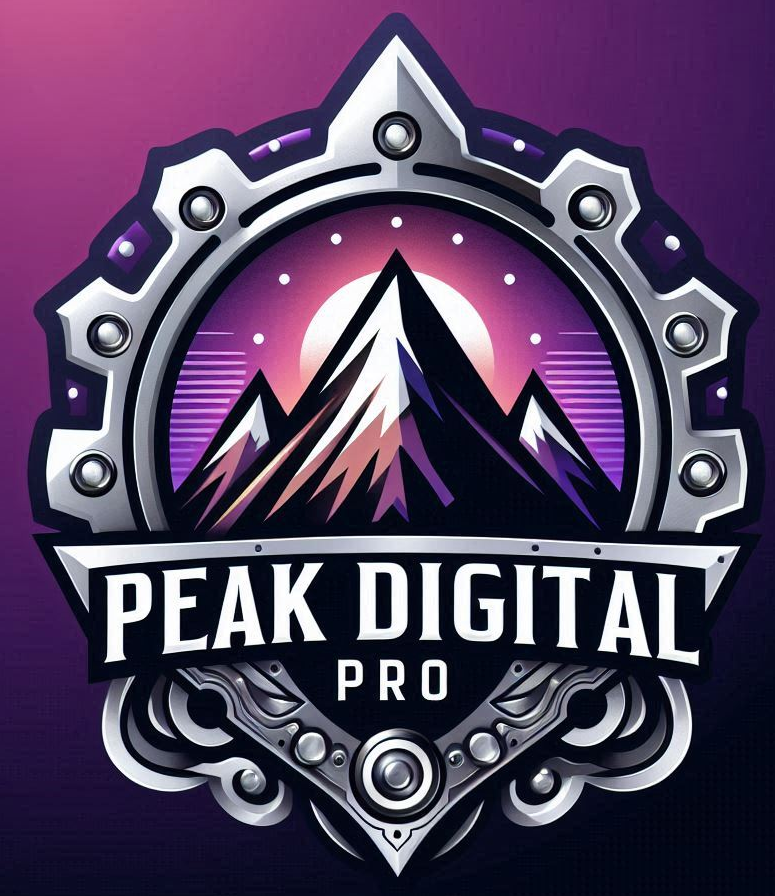Master WordPress SEO Guidelines for Business Success
WordPress powers over 43 percent of all websites, making it the undisputed giant in content management. Yet most business owners miss out on hidden SEO opportunities that could dramatically shift their search rankings. Surprisingly, the real difference rarely comes from fancy plugins or flashy web designs but from a handful of overlooked steps that even beginners can master for serious results.
Table of Contents
Quick Summary
| Key Point | Explanation |
|---|---|
| 1. Conduct a thorough SEO audit | Use tools like Google Search Console and SEMrush to evaluate your site’s current SEO performance and identify improvement areas. |
| 2. Optimize WordPress settings for SEO | Configure permalink structures and install an SEO plugin like Yoast SEO to enhance search engine visibility. |
| 3. Create high-quality, keyword-rich content | Focus on in-depth content that answers user queries while ensuring natural integration of target keywords throughout. |
| 4. Monitor performance metrics regularly | Utilize Google Search Console and analytics tools to track keyword rankings, traffic, and conversion rates for ongoing SEO adjustments. |
| 5. Stay updated on SEO trends and techniques | Continuously learn and adapt your strategy based on the latest industry developments and search engine algorithm changes. |
Step 1: Analyze Your Current SEO Performance
Analyzing your WordPress website’s current SEO performance is a critical foundation for improving your digital marketing strategy. This initial diagnostic step provides a comprehensive snapshot of your website’s search engine optimization strengths and weaknesses, enabling targeted improvements that can significantly boost your online visibility.
Begin by conducting a thorough technical SEO audit using powerful diagnostic tools. Google Search Console serves as an essential starting point, offering detailed insights into your website’s search performance, indexing status, and potential technical issues. Connect your WordPress site to this free tool and review critical metrics such as search queries, click-through rates, and any crawl errors that might be hindering your search rankings.
Next, leverage comprehensive SEO analysis platforms like SEMrush or Ahrefs to generate an in-depth performance report. These tools will help you understand key performance indicators including:
- Current keyword rankings
- Organic search traffic volume
- Backlink profile quality
- Page loading speed metrics
- Mobile responsiveness scores
Carefully examine your website’s current domain authority and compare it against competitors in your industry. This comparative analysis reveals specific areas where you can make strategic improvements. Pay special attention to pages with low performance metrics, as these represent immediate opportunities for optimization.
Here is a table summarizing the key diagnostic tools and their specific purposes for analyzing your current WordPress SEO performance:
| Tool | Primary Purpose | Key Features |
|---|---|---|
| Google Search Console | Monitor search performance, identify issues | Search queries, indexing, crawl errors |
| SEMrush | SEO audit, competitor analysis | Keyword rankings, backlink profile, traffic |
| Ahrefs | In-depth SEO and backlink analysis | Organic traffic, backlink quality, performance report |
| Yoast SEO (plugin) | WordPress SEO optimization & diagnostics | Real-time page analysis, recommendations |
This table helps you choose the right tools based on your current SEO evaluation needs.
WordPress-specific analysis requires examining your site’s core technical elements. Check your website’s XML sitemap configuration, ensure proper robot.txt settings, and verify that search engines can efficiently crawl and index your content. Plugins like Yoast SEO can provide additional diagnostic capabilities and real-time optimization recommendations.
Verify successful completion of this step by generating a comprehensive performance baseline report. Your report should include current keyword rankings, organic traffic volumes, and identified technical optimization opportunities. Read more about advanced SEO techniques for service businesses to refine your strategy further and transform these initial insights into actionable improvements.
Step 2: Optimize Your WordPress Settings
Optimizing your WordPress settings is a crucial step in establishing a strong SEO foundation for your business website. This process involves configuring multiple technical and content-related settings that directly impact your search engine visibility and overall site performance.
Permalink Structure plays a significant role in SEO optimization. Navigate to your WordPress Settings and select a permalink format that includes keywords and creates clean, readable URLs. The post name structure is typically the most SEO-friendly option, as it generates URLs that are both user-friendly and search engine optimized. For example, a URL like “ www.yourwebsite.com/wordpress-seo-guidelines ” is far more effective than a generic numerical format.
Install and configure a comprehensive SEO plugin to streamline your optimization efforts. Yoast SEO remains one of the most powerful and user-friendly options for WordPress websites. This plugin provides real-time content analysis, helps you optimize individual page metadata, and offers advanced XML sitemap generation. Configure the plugin by setting your primary target keywords, establishing site-wide SEO defaults, and enabling features like automatic internal linking and content analysis.
Your WordPress site’s general settings require careful configuration to support SEO performance. Key settings to review include:
- Ensure your site title and tagline are concise and keyword-rich
- Set your preferred domain version (with or without www)
- Configure timezone and date formatting for consistent content timestamps
- Enable search engine visibility in reading settings
Implement schema markup to provide search engines with structured data about your business. WordPress SEO plugins often include built-in schema markup tools that help search engines understand your content context. This structured data can enhance your search result appearances, potentially increasing click-through rates and improving overall search visibility.
Site performance optimization is another critical aspect of WordPress SEO settings. Configure caching plugins, minimize unnecessary scripts, and ensure your website loads quickly across different devices. Google PageSpeed Insights can help you identify specific performance improvements. Compress images, leverage browser caching, and consider using a content delivery network (CDN) to enhance site speed.

Explore our comprehensive guide on advanced on-page SEO techniques to further refine your WordPress configuration. Verify successful optimization by running a comprehensive site audit, checking your site’s loading speed, and monitoring search console performance metrics. Consistent refinement of these settings will progressively improve your website’s search engine rankings and online visibility.
Use this checklist to make sure you have successfully optimized your core WordPress SEO settings:
| Setting/Action | Completed (Yes/No) | Purpose/Description |
|---|---|---|
| Permalink structure updated | SEO-friendly URLs for better rankings | |
| SEO plugin installed (e.g. Yoast SEO) | Page-level SEO control and optimization | |
| Keyword-rich site title & tagline | Improves relevance and click-through rate | |
| Preferred domain set (www/non-www) | Consistency and search engine clarity | |
| Schema markup enabled | Enhances Search Engine Results Pages (SERPs) | |
| Caching/plugin performance configured | Faster loading speeds; improved UX | |
| Search engine visibility enabled | Ensures site is not blocked from indexing |
Use this table to check off each step and track your optimization process.

Step 3: Implement On-Page SEO Techniques
On-page SEO techniques are the fundamental building blocks of search engine optimization, transforming your WordPress website from a simple online presence to a strategic marketing tool. This step focuses on optimizing individual page elements to improve search engine rankings and attract high-quality organic traffic.
Content optimization begins with creating high-quality, original content that directly addresses user search intent. Each page or blog post should target specific keywords naturally, integrating them into your headline, first paragraph, and throughout the content without forced repetition. Keyword density matters, but readability is paramount. Aim to write comprehensive, informative content that provides genuine value to your readers while strategically incorporating relevant search terms.
Structure your content for maximum SEO impact by utilizing proper heading hierarchies. Your main headline should include the primary keyword, with subsequent H2 and H3 headings breaking down the content into logical, scannable sections. This approach not only improves readability but also helps search engines understand your content’s structure and relevance. Include semantic variations of your target keywords to capture a broader range of search queries and demonstrate content depth.
Key on-page optimization elements include:
- Compelling and keyword-rich meta titles (50-60 characters)
- Descriptive meta descriptions that encourage click-throughs
- Alt text for images that includes relevant keywords
- Internal links connecting related content on your site
- External links to authoritative sources
Image optimization represents another critical on-page SEO technique. Compress images to reduce file sizes, improving page loading speed. Use descriptive, keyword-rich file names and alt text that accurately describe the image content. This approach helps search engines understand your visual content and provides additional opportunities for keyword integration.
Understand that on-page SEO is an ongoing process of refinement. Regularly audit your content, update outdated information, and ensure each page provides unique, valuable insights. Learn more about advanced on-page optimization strategies to continuously improve your website’s search performance.
Verify the success of your on-page SEO efforts by monitoring key metrics such as organic traffic, average time on page, and search engine rankings. Tools like Google Search Console and Google Analytics provide comprehensive insights into how your optimized content performs in search results. Consistent monitoring and incremental improvements will gradually enhance your website’s search visibility and user engagement.
Step 4: Create Quality Content and Use Keywords Effectively
Creating high-quality content that strategically incorporates keywords is the cornerstone of successful WordPress SEO. This step transforms your website from a simple online presence into a powerful digital marketing tool that attracts and engages your target audience while satisfying search engine algorithms.
Keyword research forms the foundation of effective content creation. Utilize tools like Google Keyword Planner, SEMrush, or Ahrefs to identify search terms that balance high search volume with manageable competition. Focus on long-tail keywords that reflect specific user intentions, as these often convert more effectively and face less competitive ranking challenges. For instance, instead of targeting a broad term like “marketing services,” opt for more specific phrases like “affordable digital marketing for small businesses in Colorado.”
Craft content that provides genuine value to your readers while naturally integrating keywords. Avoid keyword stuffing – a practice that damages both readability and search rankings. Instead, weave keywords organically into your content, prioritizing natural language and comprehensive information. Each piece of content should comprehensively address user questions, provide unique insights, and demonstrate expertise in your field.
Consider these critical content optimization strategies:
- Write in-depth, original content that goes beyond surface-level information
- Use keywords in your title, first paragraph, and throughout the content naturally
- Include semantic variations of your primary keywords
- Create content that answers specific user questions
- Regularly update existing content to maintain relevance
Develop a consistent content strategy that addresses different stages of the customer journey. This approach involves creating content that targets users from initial awareness through to decision-making. Develop a content calendar that ensures regular publication of high-quality, keyword-optimized articles, blog posts, and resources that demonstrate your business expertise.
Content uniqueness cannot be overstated. Search engines prioritize original, valuable content that provides genuine insights. Avoid duplicating content across your website or copying material from other sources. Each piece should offer a fresh perspective, backed by your specific expertise and understanding of your target audience’s needs.
Explore our comprehensive guide to content optimization techniques to refine your approach further. Verify the effectiveness of your content strategy by monitoring key metrics such as organic traffic, time on page, and conversion rates. Use tools like Google Analytics to track how your keyword-optimized content performs, making data-driven adjustments to continuously improve your SEO strategy.
Step 5: Monitor and Adjust Your SEO Strategy
Monitoring and adjusting your SEO strategy is a dynamic process that transforms your WordPress website from a static online presence to an adaptive, high-performing digital marketing tool. This critical step ensures your optimization efforts remain effective in the ever-changing landscape of search engine algorithms and user behavior.
Google Search Console serves as your primary diagnostic platform for tracking website performance. Connect this free tool to your WordPress site and regularly review key metrics such as search queries, click-through rates, and potential technical issues. Pay close attention to impressions versus clicks – a discrepancy might indicate opportunities for content or metadata optimization. Investigate pages with high impressions but low click-through rates, as these represent prime candidates for strategic improvements.
Utilize comprehensive analytics platforms like Google Analytics and SEMrush to gain deeper insights into your website’s performance. These tools provide granular data about user behavior, traffic sources, and keyword performance. Track conversion rates alongside traditional SEO metrics to understand how your optimization efforts translate into tangible business results. Look for patterns in user engagement, identifying which content types and keywords drive the most meaningful interactions.
Consider these critical monitoring and adjustment strategies:
- Review website performance metrics monthly
- Analyze keyword ranking changes
- Identify and address technical SEO issues promptly
- Compare your performance against top-ranking competitors
- Update content based on emerging search trends
Establish a systematic approach to SEO strategy refinement. Create a quarterly review process where you comprehensively assess your website’s performance, comparing current metrics against baseline measurements. This approach allows you to make data-driven decisions, incrementally improving your search engine visibility. Be prepared to pivot your strategy in response to significant algorithm updates or shifts in your industry’s digital landscape.
Continuous learning is fundamental to successful SEO management. Stay informed about industry trends, algorithm changes, and emerging optimization techniques. Subscribe to reputable SEO blogs, attend webinars, and participate in professional forums to keep your knowledge current. Learn more about advanced SEO strategies for service businesses to refine your approach continually.
Verify the success of your monitoring efforts by establishing clear, measurable benchmarks. Track improvements in organic traffic, keyword rankings, and conversion rates. A successful SEO strategy should show consistent, incremental growth over time, demonstrating your website’s increasing relevance and authority in search engine results.
The following table outlines essential metrics and tools for monitoring and adjusting your WordPress SEO strategy:
| Metric or Activity | Recommended Tool | Outcome/Action |
|---|---|---|
| Search queries/performance | Google Search Console | Identify high/low performing pages |
| Keyword rankings | SEMrush/Ahrefs | Track SERP position changes |
| Organic traffic | Google Analytics | Gauge SEO success and user engagement |
| Conversion rates | Google Analytics | Measure business impact of SEO |
| Competitor comparison | SEMrush/Ahrefs | Spot opportunities and benchmark progress |
| Technical SEO issues | Google Search Console | Pinpoint and resolve crawl or indexing errors |
Refer to this table during your monthly or quarterly SEO reviews to guide data-driven adjustments.
Ready to Turn Your WordPress SEO Frustrations into Business Wins?
Are you tired of inconsistent website traffic and bland search results holding your business back? This guide highlights the exact pain points you face, from confusing technical settings to the ongoing struggle of monitoring SEO performance on WordPress. You want real growth and sustainable results that take your business from invisible to visible in your local market.

At Peak Digital Pro , we offer more than advice. Our expert team specializes in transforming Colorado businesses through proven strategies like those outlined in this article. We take care of everything, from meticulous SEO optimization to powerful web development that eliminates bottlenecks and creates measurable success. If you are ready to bridge the gap between analysis and action, partner with us today. Take the first step toward lasting local dominance and visit our home page to see how you can outperform your competitors now.
Frequently Asked Questions
How can I analyze my WordPress website’s current SEO performance?
To analyze your website’s SEO performance, conduct a technical SEO audit using tools like Google Search Console for insights into search performance and indexing issues. You can also use platforms like SEMrush or Ahrefs to assess keyword rankings, organic traffic volumes, and backlink quality.
What are some effective on-page SEO techniques for WordPress?
Effective on-page SEO techniques include optimizing meta titles and descriptions, using header tags appropriately, incorporating internal and external links, and ensuring content is high-quality and keyword-rich. Additionally, optimize images with descriptive filenames and alt text for better search engine understanding.
How important is content quality for SEO success on WordPress?
Content quality is crucial for SEO success. High-quality, original content that addresses user intent not only improves search rankings but also engages readers, leading to higher conversion rates. Regularly updating content and incorporating relevant keywords naturally is essential for ongoing success.
What tools should I use to monitor my WordPress SEO strategy?
To effectively monitor your SEO strategy, utilize tools like Google Search Console for performance metrics, Google Analytics for user behavior insights, and SEMrush for comprehensive analysis of keyword performance and competition. Regular reviews and adjustments based on data can help improve your site’s SEO over time.
Recommended
-
[
SEO-Friendly URLs: A Simple Guide for Business Owners
]( https://peakdigital.pro/2025/08/16/seo-friendly-urls-guide-for-business-owners )
-
[
Essential Content Optimization Tips for Business Owners
]( https://peakdigital.pro/2025/08/16/content-optimization-tips-for-business-owners )
-
[
Best On-Page SEO Techniques for US Business Owners in 2025
]( https://peakdigital.pro/2025/07/12/on-page-seo-techniques-for-us-business-owners-2025 )
-
[
How to Improve Website Rankings: 2025 Guide for U.S. Businesses
]( https://peakdigital.pro/2025/07/16/how-to-improve-website-rankings-2025-guide-us-businesses )







